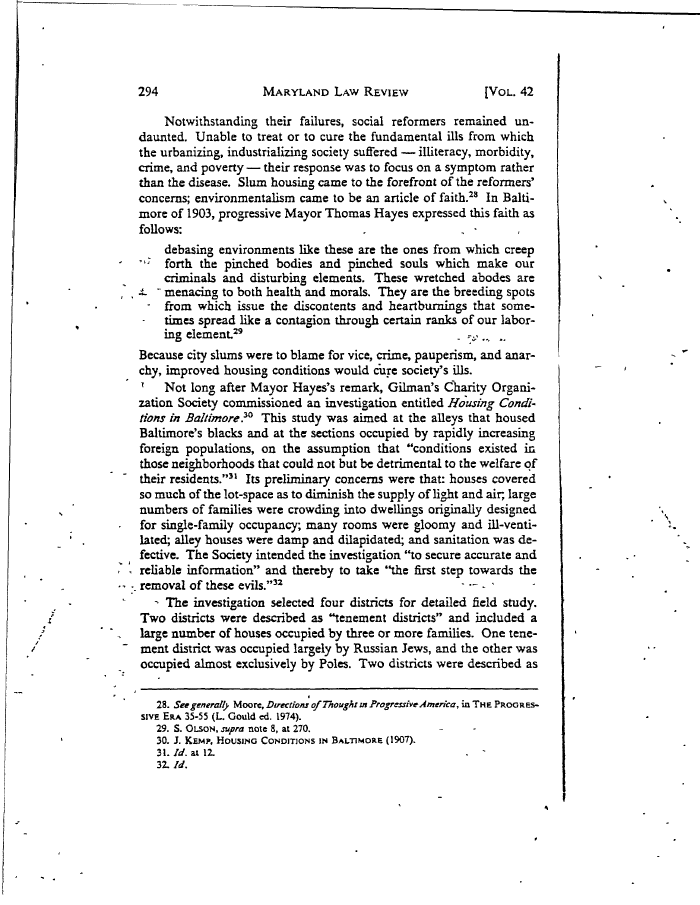 |
||||
|
Garrett Power, Apartheid Baltimore Style: The Residential Segregation Ordinances of 1910-1913, Maryland Law Review, 42 (1983) , Image No: 7 Enlarge and print image (62K) << PREVIOUS NEXT >> |
 |
||||
|
Garrett Power, Apartheid Baltimore Style: The Residential Segregation Ordinances of 1910-1913, Maryland Law Review, 42 (1983) , Image No: 7 Enlarge and print image (62K) << PREVIOUS NEXT >> |
| 294 MARYLAND LAW REVIEW [VOL. 42 Notwithstanding their failures, social reformers remained un- daunted. Unable to treat or to cure the fundamental ills from which the urbanizing, industrializing society suffered — illiteracy, morbidity, crime, and poverty — their response was to focus on a symptom rather than the disease. Slum housing came to the forefront of the reformers' concerns; environmentalism came to be an article of faith.28 In Balti- more of 1903, progressive Mayor Thomas Hayes expressed this faith as follows: debasing environments like these are the ones from which creep forth the pinched bodies and pinched souls which make our criminals and disturbing elements. These wretched abodes are menacing to both health and morals. They are the breeding spots from which issue the discontents and heartburnings that some- times spread like a contagion through certain ranks of our labor- ing element29 Because city slums were to blame for vice, crime, pauperism, and anar- chy, improved housing conditions would cure society's ills. Not long after Mayor Hayes's remark, Oilman's Charity Organi- zation Society commissioned an investigation entitled Housing Condi- tions in Baltimore.30 This study was aimed at the alleys that housed Baltimore's blacks and at the sections occupied by rapidly increasing foreign populations, on the assumption that "conditions existed in those neighborhoods that could not but be detrimental to the welfare of their residents.31 Its preliminary concerns were that: houses covered so much of the lot-space as to diminish the supply of light and air; large numbers of families were crowding into dwellings originally designed for single-family occupancy; many rooms were gloomy and ill-venti- lated; alley houses were damp and dilapidated; and sanitation was de- fective. The Society intended the investigation "to secure accurate and reliable information" and thereby to take "the first step towards the removal of these evils.32 The investigation selected four districts for detailed field study. Two districts were described as "tenement districts" and included a large number of houses occupied by three or more families. One tene- ment district was occupied largely by Russian Jews, and the other was occupied almost exclusively by Poles. Two districts were described as 28. See generally Moore, Directions of Thought in Progressive America, in THE PROGRES- SIVE ERA 35-55 (L. Gould ed. 1974). 29. S. OLSON, supra note 8, at 270. 30. J. KEMP, HOUSING CONDITIONS IN BALTIMORE (1907). 31. Id. at 12- 32. Id. |